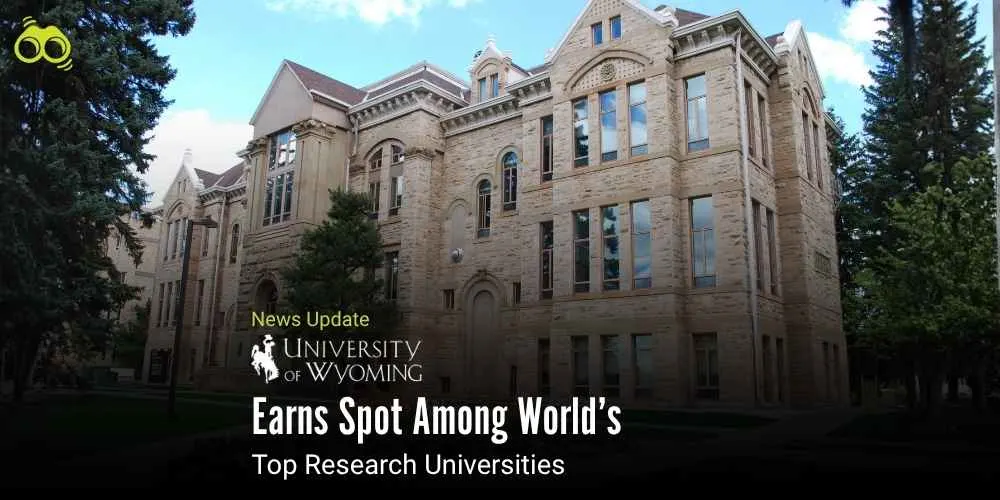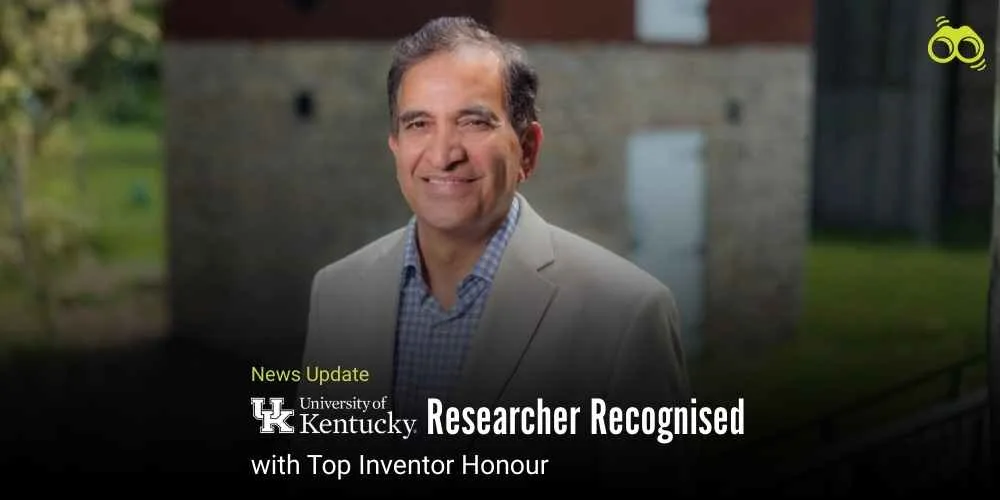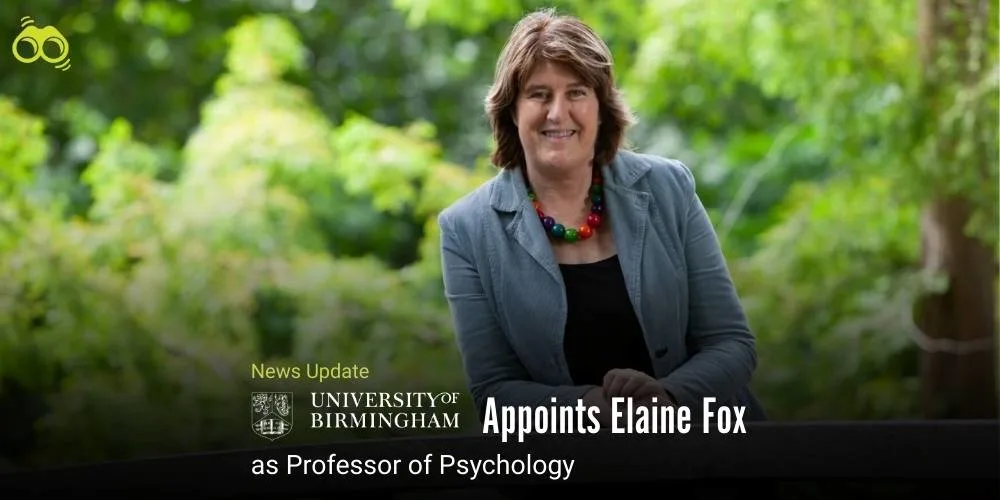UW Leads Five-State Region in Research Excellence and Global Visibility
University of Wyoming Earns R1 Status and Climbs Global Research Rankings
The University of Wyoming (UW) is recognised as an emerging research institution in higher education. Its practically ever-increasing reputation has garnered acknowledgement in two of the most important world rankings designed to reflect an institution's progress and impact. Among these recent reports is one from Research.com, which placed UW at No. 146 in the list of Best Universities in the Country for 2025. Furthermore, U.S. News ranked UW at No. 172 among American universities in its list of Best Global Universities.
These rankings denote UW's rising profile among top research universities in the United States, while slowly joining hands with global higher education rankings. Here, Research.com scrutinises 2,000-plus institutions from over 105 higher education systems across the globe, primarily grading overall research performance. This would include consideration of research output in scientific publications and the citation rate of such papers.
Likewise, the U.S. News had evaluated 2,250 universities from more than 100 countries, applying detailed metrics such as published research output, citation impact, international collaboration, and academic reputation. These two paradigms provide insight into how global university rankings assess research performance and help in pinpointing the best universities for scientific research and innovation.
Parag Chitnis, UW's Vice-President for Research and Economic Development, is quoted as saying that the university, modest as it is, stands out as a research institution of national and international merit. Reportedly, he stressed that UW had ranked highest among universities within the five-state region of Wyoming, Idaho, Montana, North Dakota, and South Dakota, inasmuch as some of these institutions were larger in student population and research expenditures. Besides these rankings, UW was recently given R1 designations from the American Council on Education and the Carnegie Foundation for the Advancement of Teaching. This designation is only enjoyed by 4.8 per cent of the nearly 4,000 accredited institutions in the United States that offer degrees, and it means "very high research activity." This further recognition confirms UW's standing as one of the best in the world concerning research and innovation.
The research enterprise of the university has been particularly on the upswing. Reportedly, external funding for research and engagement technically increased from $120 million in fiscal year 2023 to reach the record amount of $183 million in 2025, with $150 million being raised in 2024. This increasing benefit shows UW's commitment to research excellence from U.S. universities and its role in enhancing higher education in America. In addition, UW's research initiatives are said to contribute not just to international knowledge but also to give salient benefits to local communities in Wyoming. As a land-grant institution for the state, UW is said to be dedicated to providing an accessible, quality education, performing research to meet regional needs, and cooperatively working with industries and communities for the betterment of economic and social development.
Editor’s Note:
The rise of the University of Wyoming in international and national research rankings requires more than mere acknowledgement; rather, it would pose a reflection on the criteria for excellence in higher education today. Not only in statistics, but it also affirms the continued investments made in research capacity, scholarship output, and institutional relevance that underlie UW's membership in both the Research.com 2025 best universities in the United States list and the U.S. News for the best global universities. Also, another achievement, the R1 designation of the university by the American Council on Education and the Carnegie Foundation, puts it with an elite group of institutions engaging in policies that indicate "very high research activity." Fewer than 5 per cent of the institutions that are accredited in the United States hold this status, thereby stressing the credibility of UW as a serious contributor to knowledge systems as well as innovation in science. What is particularly critical is that the particular performance of the university, in relation to size and regional context, is geographical. This is a five-state dumpster that remains underappreciated within the national conversation: UW is leapfrogging its much larger peers on both recognition and funding, culminating in that steady climb from $120 million in external research funding in 2023 to setting a record of $183 million in 2025. It’s also important to note that the University of Wyoming (UW) focuses on more than just academic recognition. As a land-grant university, UW is strongly committed to serving the people of Wyoming through practical research, community engagement, and working closely with local industries. This approach shows that UW values research that not only meets global standards but also responds to local needs.
According to Skoobuzz, while many national universities are judged by internal prestige, UW’s success proves that excellence doesn’t depend on size. Instead, what truly matters is having a clear purpose, a strong strategy, and a real commitment to making a difference. That’s what sets UW apart as a leading research university.
FAQs
1. What recent rankings has the University of Wyoming achieved?
The University of Wyoming (UW) has been ranked No. 146 in Research.com’s 2025 list of the Best Universities in the United States, and No. 172 in U.S. News’ Best Global Universities rankings. These placements reflect UW’s growing prominence in both national and international research landscapes.
2. Why are these rankings significant?
These rankings matter because they validate UW’s strategic investment in research excellence. For a university of modest size, UW’s ability to outperform larger institutions in research output and impact is both impressive and instructive. It demonstrates that quality, not scale, is the true measure of institutional strength.
3. How do these ranking bodies evaluate research performance?
Research.com assesses universities based on cumulative research performance, including the volume of scientific publications and citation frequency. U.S. News applies broader metrics such as research output, citation impact, international collaboration, and academic reputation. Both approaches offer credible insight into how global university rankings evaluate research excellence.
4. Is UW considered a top research institution in the United States?
Yes. UW’s R1 designation—awarded by the American Council on Education and the Carnegie Foundation—places it among the top 4.8% of U.S. universities with “very high research activity.” This status confirms UW’s standing as a serious research institution, both nationally and globally.
5. How has UW’s research funding evolved in recent years?
UW’s external research funding has grown significantly, rising from $120 million in 2023 to $150 million in 2024 and reaching a record $183 million in 2025. This upward trajectory reflects a deliberate and effective research strategy, underpinned by strong institutional leadership.
6. What impact does UW’s research have beyond academia?
UW’s research is not confined to scholarly circles. As Wyoming’s land-grant university, it is committed to addressing regional needs through applied research, community engagement, and industry collaboration. Its work contributes directly to the economic and social development of Wyoming communities.
7. What does this mean for the future of higher education in America?
UW’s success challenges the assumption that only large, urban institutions can lead in research. It sets a precedent for how regional universities can achieve global relevance through strategic focus, academic rigour, and community impact. In short, it’s a model worth watching.














0 Comments (Please Login To Continue)